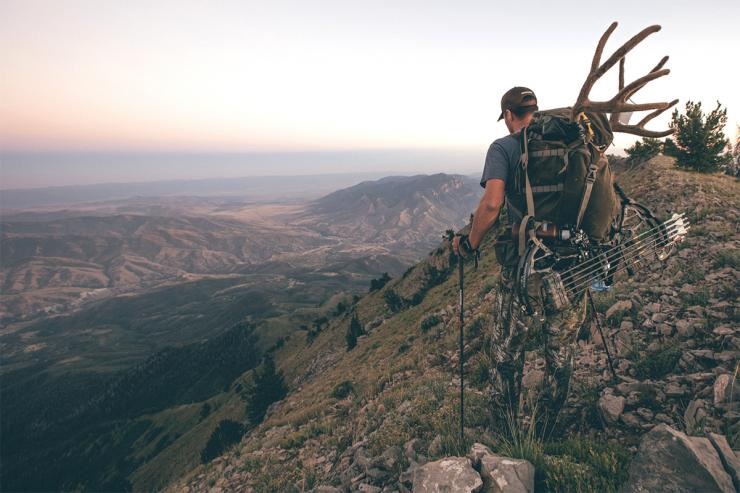 Bowhunting deer in the West is a different ball game than hunting them in the East. It takes a separate set of skills and tactics to get the job done. Here are a few short tips to get you started.
Bowhunting deer in the West is a different ball game than hunting them in the East. It takes a separate set of skills and tactics to get the job done. Here are a few short tips to get you started.
- Read the records. Knowing where the biggest bucks are coming from will point you in the right direction. You’ll often find pockets of good hunting. These hotspots are where you want to focus your efforts.
- Hunt where they are. You can’t kill a deer that isn’t there. Do the digital research. Then scout in the field to find a target deer.
- Hunt with a partner and cover lots of ground. More eyes are better when you’re glassing for deer. You can cover more ground, too. And let’s face it, when hunting in the West, it’s best to not hunt alone if at all possible.
- Perfect your glassing skills and abilities. This is crucial to success in mountain and open country.
- Less eyes means a better opportunity. Find the right scenario. It’s harder to stalk a group of deer than a lone buck.
- Likewise, know a good stalking situation when you see one. If it’s a good situation, capitalize on it. If not, wait for a better one.
- Treestands do work. Sure, stalking is more popular, though. But don’t completely rule out hunting from above.
- Have plenty of patience. You’re going to need it.
- Stay downwind and understand how wind works in mountainous and hilly terrain. Thermals can be killer if you don’t read them correctly.
- Once you’ve homed in on your target, and you’re out of sight, cover ground as fast as you can. You never know when a deer could move. If possible, wait until the animal is bedded and then begin your approach.
- Move slow when necessary and use the terrain to your advantage. Stay out of sight as long as possible. Once you’re exposed, belly-crawl and/or scoot the rest of the way until you’re in range.
- Be extra quiet during the final yards of the stalk. Lose the pack. Pull off your boots. And do anything else you can to reduce noise.
- Wait for the deer to stand. Don’t be one of those hunters who tosses a rock to jump the deer. Be patient. Wait for the deer to stand on its own. You’ll be offered a lot better and calmer shot opportunity if you do.
- Draw when the deer is distracted. Wait until an opportunity presents itself to release an arrow.
- Judge the alertness and stress level of your target. You may need to compensate for string jump if the deer is very nervous.
Are you a deer hunter thirsty for knowledge? Check out our stories, videos and hard-hitting how-to’s on deer hunting.
